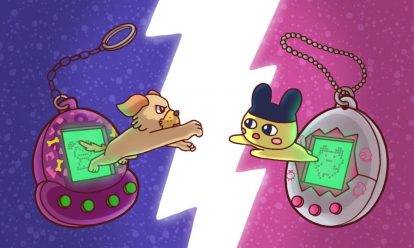
November 21, 2023
Virtual Pet Showdown: Giga Pet Vs. Tamagotchi
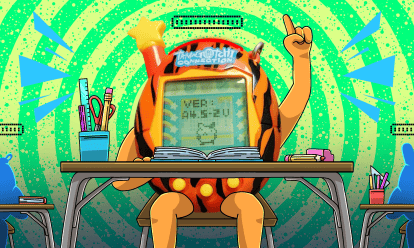
November 20, 2023
How to Discipline Your Tamagotchi: Tough Love the Virtual Way
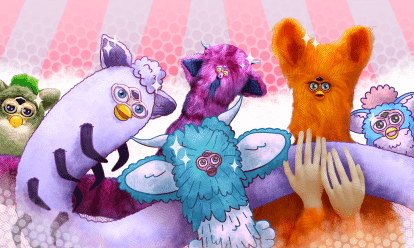
November 19, 2023
ReFurbishing An Icon: Long Furby Explained
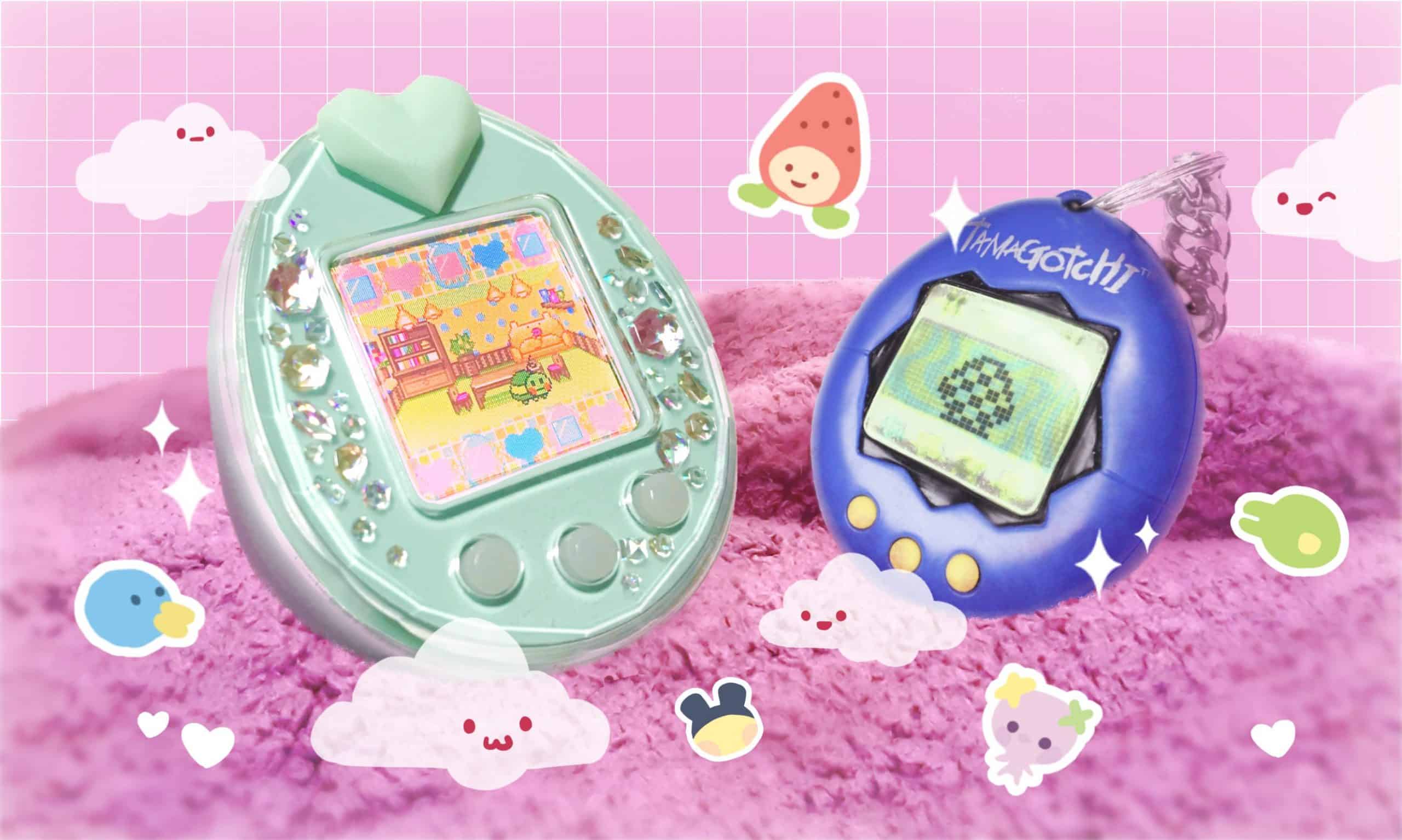
Remember the Tamagotchi? It totally rocked the scene back in the mid to late 90s and kicked off the era’s digital pet obsession. A pet that fit right in your pocket, but was contained within a tiny pixelated screen – this egg-shaped thingamajig was the OG. The very first of its kind! But here’s the kicker, we didn’t just treat them like pixelated pals. Nope, we formed real bonds with those Tamas. They aren’t just toys – they‘re a slice of pure ’90s nostalgia that flipped our world upside down the moment we got one in our hands.
Developed in Japan by Bandai and later sold worldwide, the Tamagotchi is the quintessential 90s toy phenomenon. By 1997, it seemed like every kid had one, and if you didn’t, you were probably playing with its chief competitor – Giga Pets. Still ever popular and evolving, there are over 36 types of Tamagotchis to test your nurturing skills on.
It wasn’t just about pressing buttons though. Nurturing a Tamagotchi involved feeding, cleaning up poop, and keeping them happy. Trust us, getting that beep in the middle of class, signaling your Tamagotchi needed attention, was like having a secret mission. We’d trade tips with our buddies, showing off how our pets were thriving or trying to figure out what they needed. It’s like we had a digital family, right there in our hands.
So, what’s the deal with Tamagotchi? What’s up with that name? Do they have a back story? And why did it become such an unforgettable plaything? Let’s break it down and get to the bottom of it.
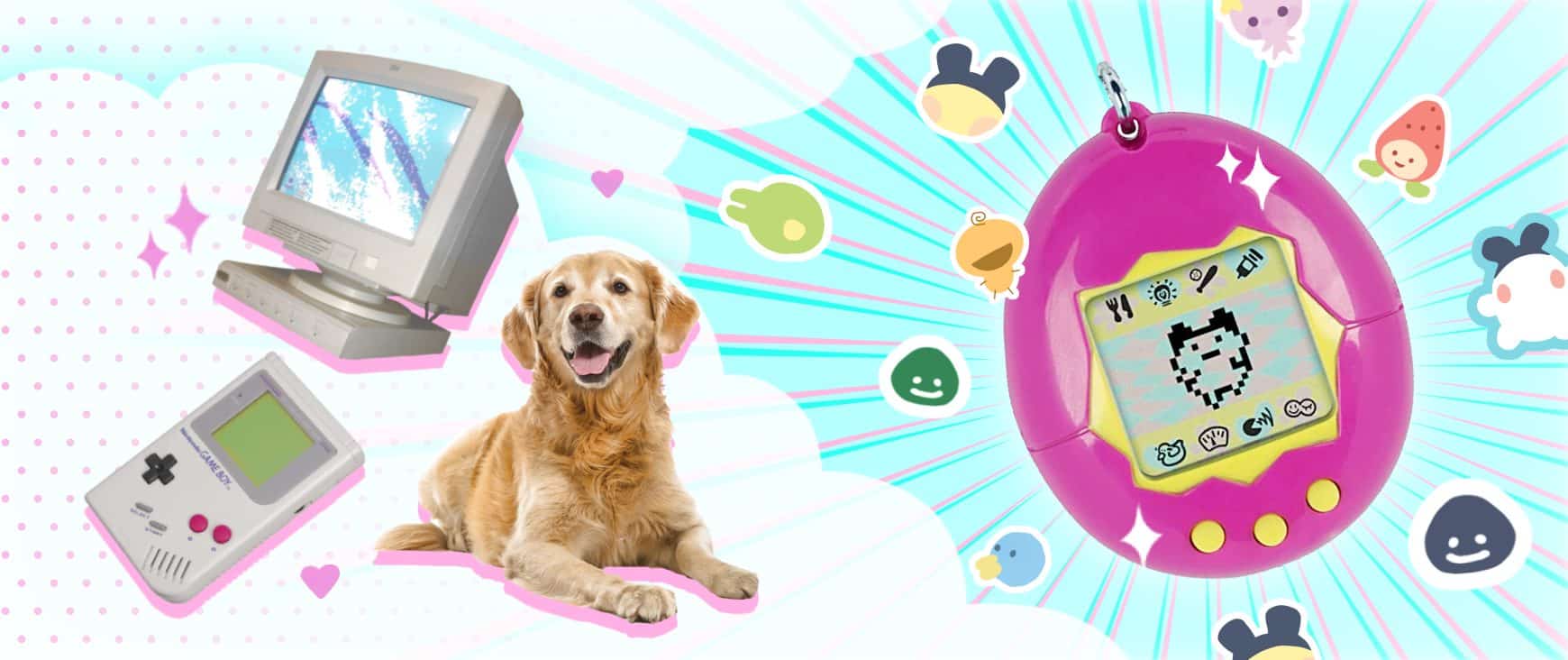
A Tamagotchi is a 2″ small egg-shaped computer – really more of a tiny handheld game console like a Game Boy – that can fit into your pocket. It has a small LCD screen just 32 pixels wide by 16 inches tall and three buttons used to navigate the menu and make selections.
What at first seemed like a game was really more of a test – a test of your ability to take care of a small alien pet. No matter what Tamagotchi you had, it was a needy little critter and required almost constant attention to keep it in good health.
Every Tamagotchi needed to be fed, played with, nurtured, and disciplined – just like a real pet. And here’s the stinger – if you failed to take care of your Tamagotchi, it would keel over and perish before you could say “parental neglect”.
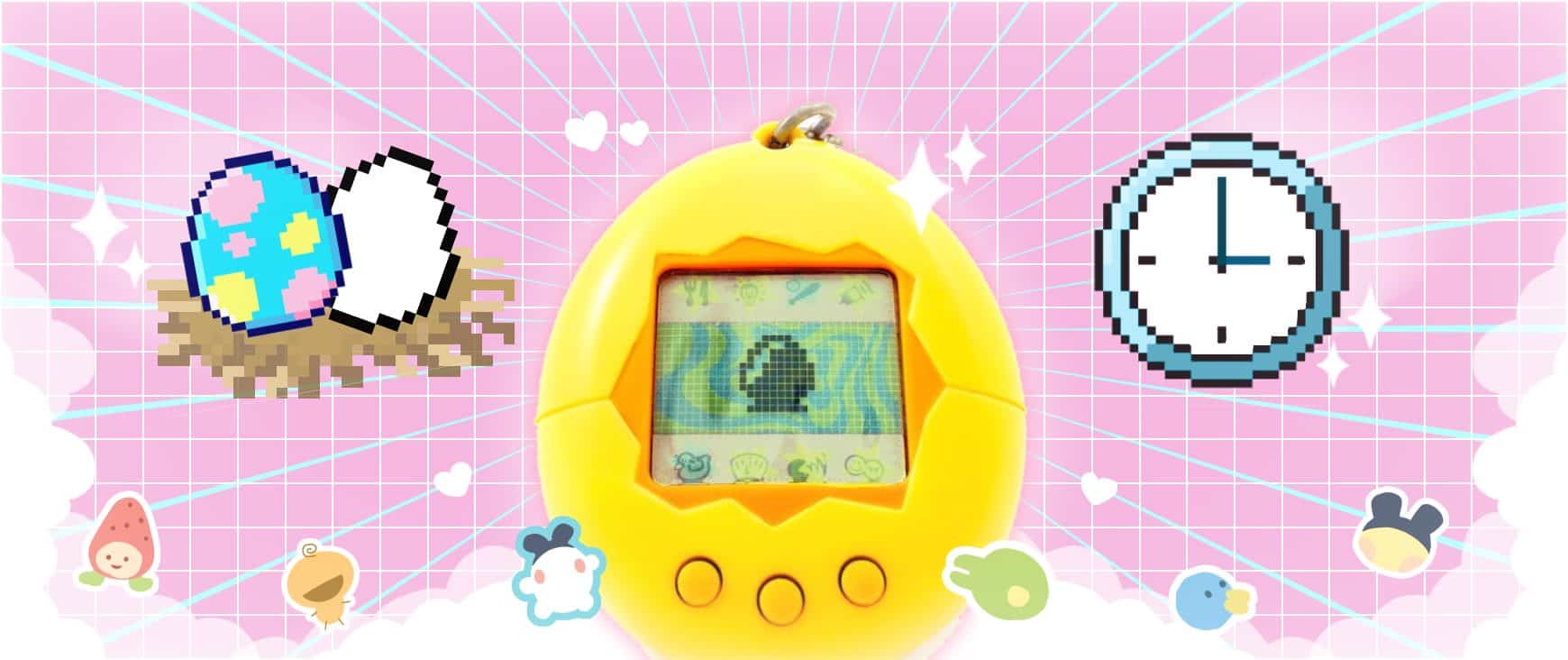
Tamagotchi (たまごっち) is a portmanteau combining the Japanese word tamago (which means “egg” in Japanese) and uocchi (Japanese translation of the English word “watch”)
The name makes sense since the Tamagotchi toy is shaped like an egg, and the lifecycle of the creature you’re caring for starts after you set the device’s time like you would with a watch.
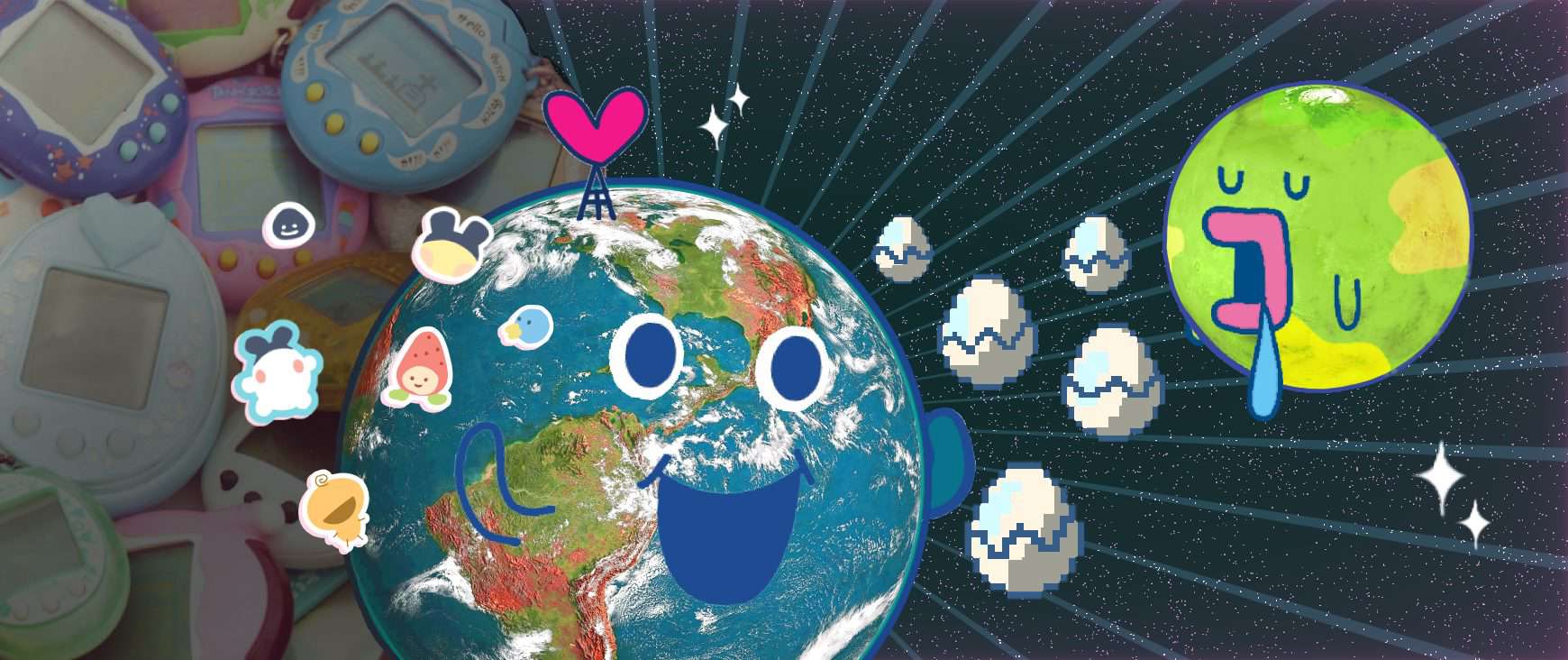
The Tamagotchis are actually aliens that hail from the creatively named Tamagotchi Planet.
The background lore for the game explains that the Tamagotchi race has sent eggs to Earth to test how well humans can take care of their babies (an act that already proves us humans are better parents).
There’s an in-universe explanation for the toys themselves as well! The egg-shaped containers kids are playing with were designed by a scientist to make caring for the Tamagotchi easier, so kids could suspend disbelief and imagine that the collection of pixels on their screen was actually a tiny alien creature.
The lifecycle of the original Tamagotchi was super short, around 3 weeks no matter how well you took care of them. There were outliers, with the longest-living Tamagotchis recorded making it to 89 days old!
When it inevitably happened, a ghost of your Tamagotchi manifests on the screen next to a little gravestone – cute, right? There’s no secret ritual to resurrect your Tamagotchi. The only option is to reset your game and try again.
This life limit was eventually removed in later models, who now live forever as long as you keep up the care.
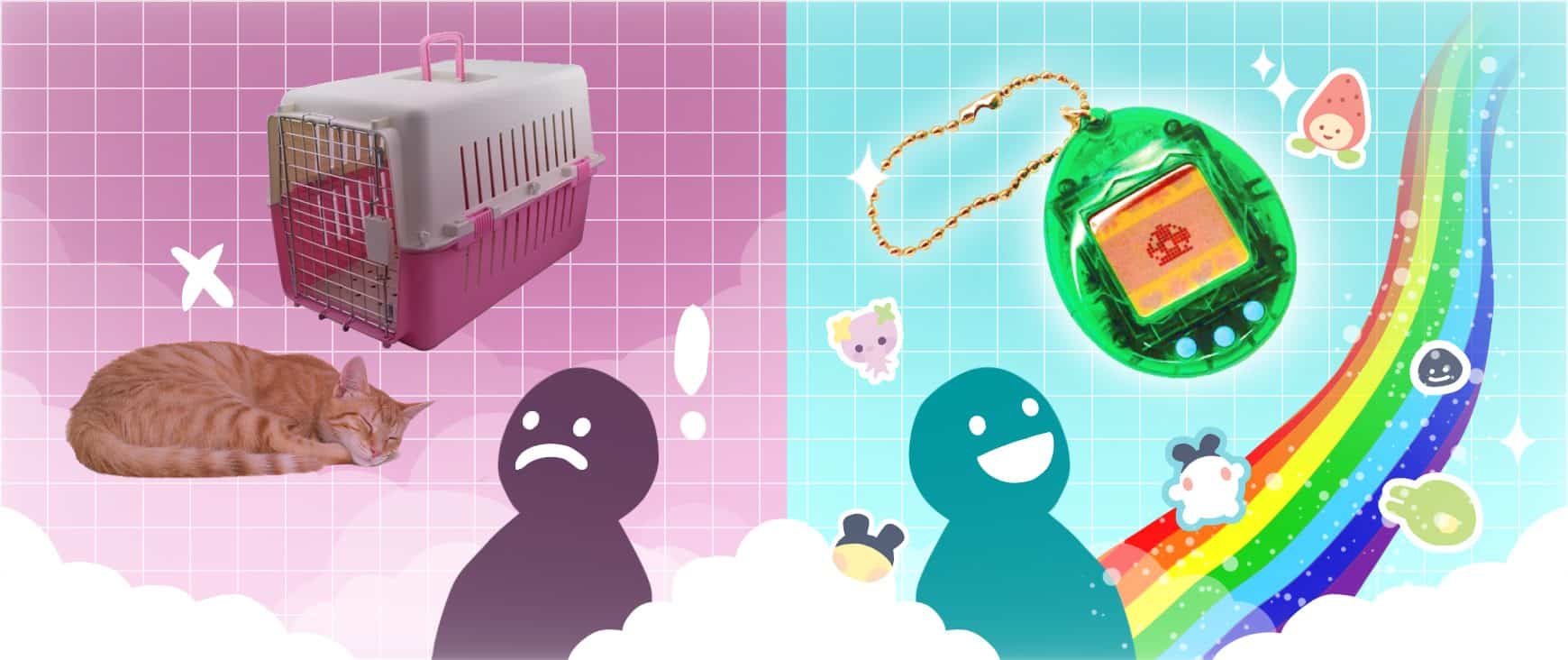
As computer memory became smaller and more efficient in the 1990s, plenty of toys had computerized elements – so what made the Tamagotchi such a runaway success?
Quite simply, Tamagotchi was like nothing any kid had seen before. While Tamagotchi didn’t invent the virtual pet (Dogz: Your Computer Pet had come out a year before for PC), it was the first product to translate the concept into a physical toy.
As the tale goes, Japanese toy designers Akihiro Yokoi and Aki Maita were inspired by a commercial where a boy couldn’t take his pet turtle on a trip. This got their creative juices flowing, and in 1995 the idea for the Tamagotchi was conceived.
The genius behind it isn’t hard to comprehend – every kid wants a pet, but taking care of a real living animal isn’t always convenient. With the Tamagotchi, kids could own a virtual, portable pet with the same basic needs as a real animal, but none of the real-world consequences (other than emotional damage when your Tamagotchi passed away).
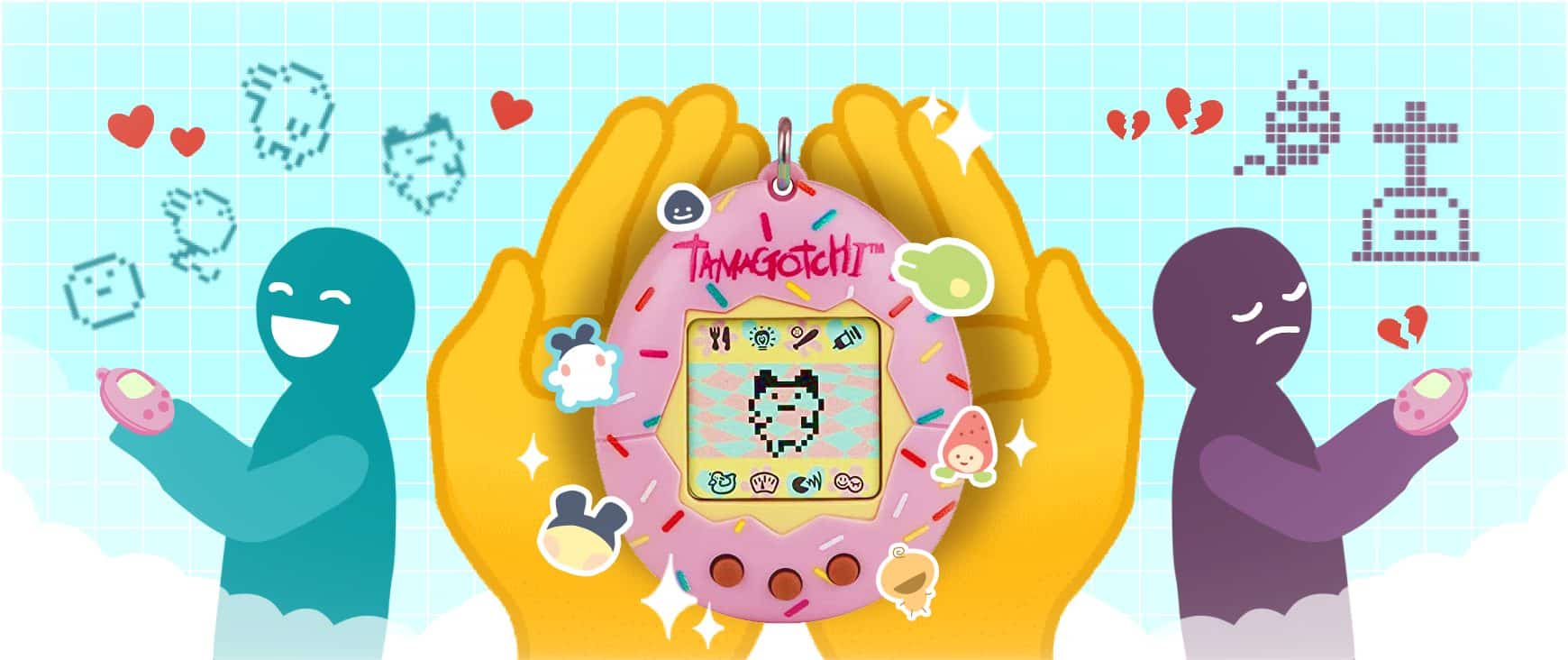
90s kids were pretty attached to their Tamagotchi.
Literally, of course. We wore them on a chain.
After just a little bit of time with one, a Tamagotchi became more than just a toy. They represented a commitment, they were your best friend, and it was up to you to keep them alive. No pressure, small child.
When kids realized the consequences of neglecting to take care of their virtual pets, they were devastated. For many children, losing their Tamagotchi was their first real experience of grief and the finality of death. And while you could always reset your device and start again, you would never love another Tamagotchi as dearly as you loved your first.
Witnessing your classmates have such a bond with their virtual pets would make you want your own. In many ways, getting a Tamagotchi and keeping it alive was a status symbol, proving that you had what it takes and deserved the love of your virtual pet.
People’s love for their Tamagotchis was so deep that some even went about giving them formal burials.
In 1998, a pet cemetery in the UK famously started offering funeral services for dead Tamagotchis, placing them in a miniature wooden casket and burying them 6″ deep. That’s a little much for us, but we understand the sentiment.
The 1990s was a defining decade for video games, but they were still primarily marketed to boys. The Tamagotchi was unique in that it was primarily marketed towards girls. Although it leveraged gender role stereotypes around motherhood like many 90s toys for girls at the time, it was an overall positive step for inclusivity in gaming.
While your Tamagotchi could die, the game didn’t feature any violence in the way that similar creature-based games like Pokémon or Digimon did. Tamagotchi appealed to many parents concerned with the violence in video games and the apparent effect it would have on their children.
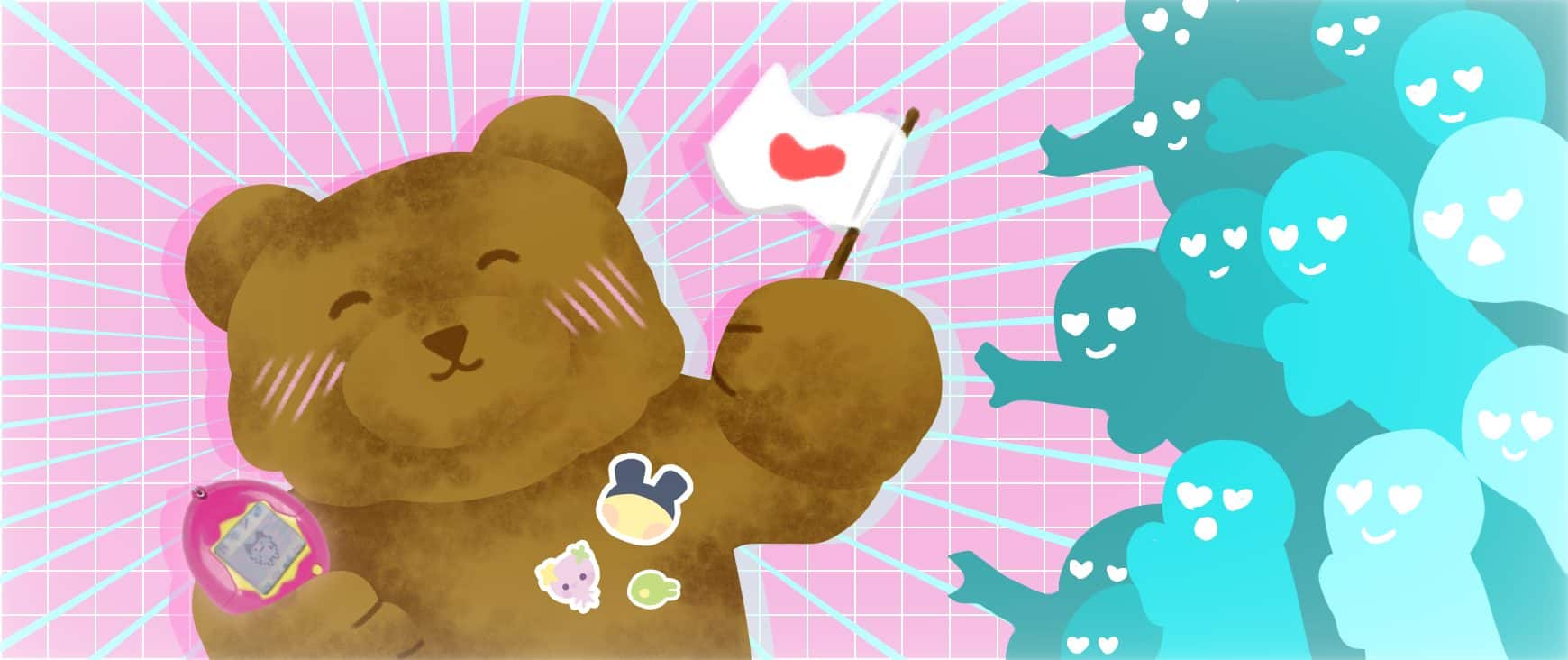
Like Pokémon and Power Rangers, Tamagotchi was a product of Japanese culture that fascinated Americans with its unique concepts and aesthetics. Specifically, however, Tamagotchi is significant because it was one of the first prominent examples of Americans consuming a product of Japanese Kawaii culture.
Kawaii かわいい is a Japanese word for “loveable,” “adorable” or “cute” (words you could certainly use to describe any Tamagotchi). The term has transcended its literal meaning to encompass the entire culture of cuteness across Japan and can be seen everywhere, from advertising media to fashion.
In the same way that Westerners have Goth or Punk culture, the Japanese have Kawaii. The Tamagotchi characters were specifically designed to appeal to Japanese children who loved Kawaii culture, and little did the creators realize – Western kids would eat it up also.
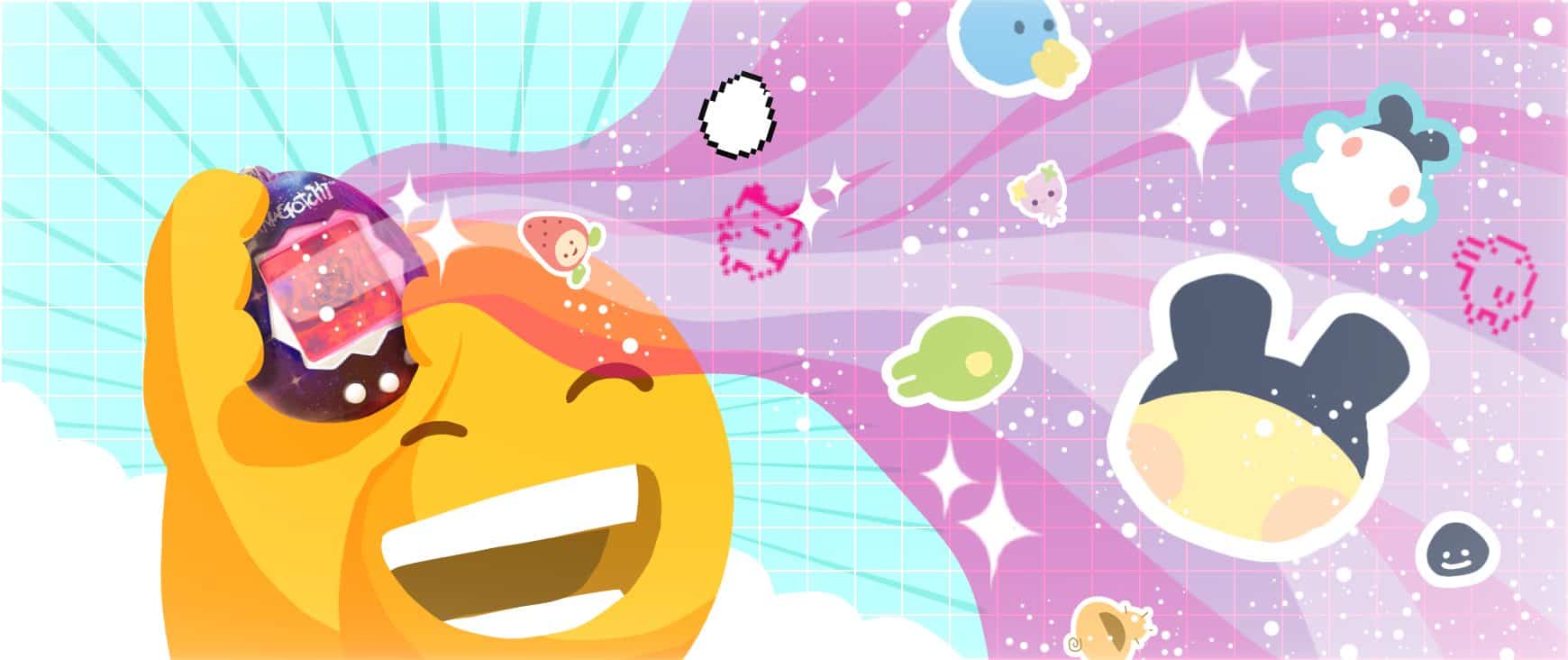
The success of the Tamagotchi is both beautifully simple and fascinatingly complex on various levels, and the influence the Tamagotchi fad had on 90s kids is arguably more impactful than any other of the decade.
The brand is still going strong today, with Tamagotchi based on popular franchises like Jujutsu Kaisen, The Mandalorian, and Hello Kitty existing alongside the classic originals – all of which can be purchased from our affiliate partner, Entertainment Earth.
Whether you enjoy the new school or the old school of Tamagotchi, make sure you give them all the love and attention they need to survive. Oh, and before you go, spare a thought for all the Tamagotchis we lost along the way.
For more awesome 90s content like this, you can follow Rediscover 90s Toys on Instagram, Pinterest, and our other social media pages.
This article may contain affiliate links. If you use one of our links to make a purchase, we may earn a commission.
Lee is curator of nostalgia and a long-time collector of loveable junk. An 80s baby, 90s kid, he knows he had it good when it came to Saturday morning cartoons. Spends his life trying to recapture the dopamine hit of playing Game Boy for the first time and believes Beanie Babies will make a fortuitous comeback. Obsessed with everything (and anything) retro, he is your trusted guide to a world of 90s toys, games and collectables.

Check it out!

November 21, 2023
Virtual Pet Showdown: Giga Pet Vs. Tamagotchi

November 20, 2023
How to Discipline Your Tamagotchi: Tough Love the Virtual Way

November 19, 2023
ReFurbishing An Icon: Long Furby Explained